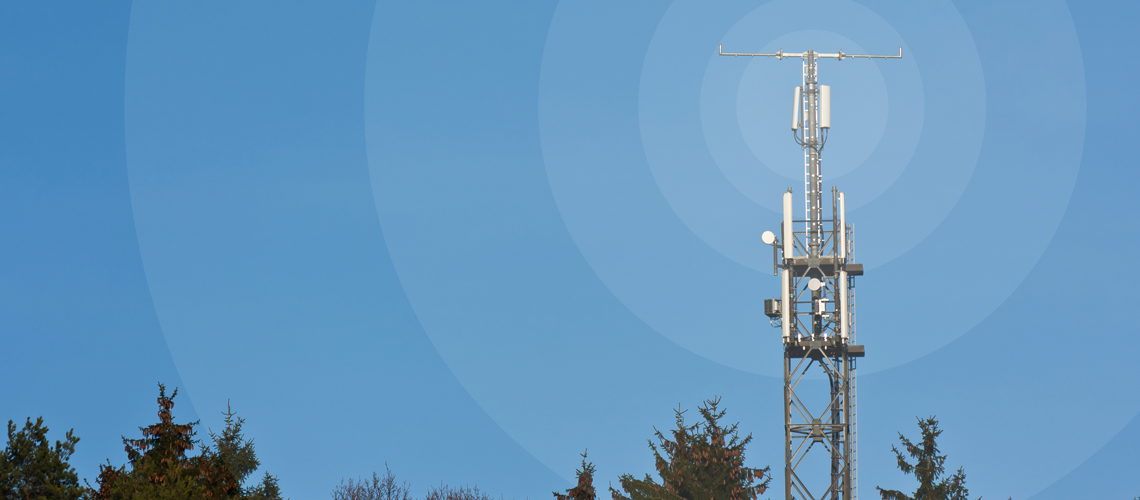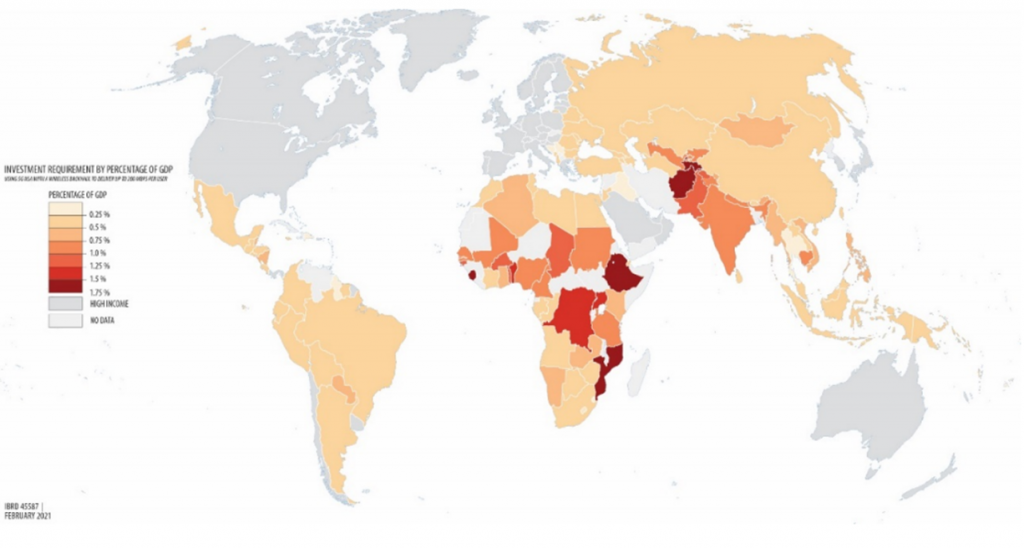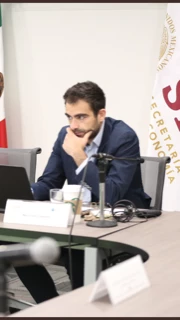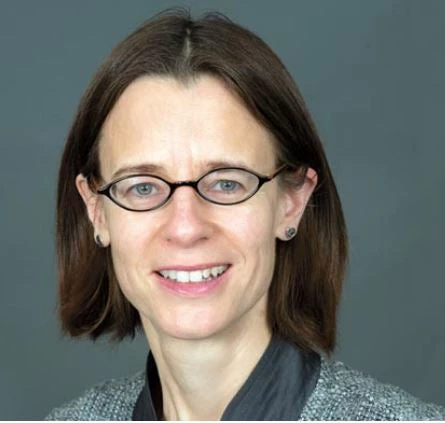 Un mât de réseau de téléphonie cellulaire
Un mât de réseau de téléphonie cellulaire
Reaching universal broadband coverage is considered a milestone to achieve wider development objectives such as economic growth and social inclusion.
In fact, as of today approximately 10% of the world population is not covered by a decent mobile signal (the ‘coverage gap’) (GSMA, 2019) and connecting these areas on a commercially viable basis will require judicious policy choices to incentivize investment.
New research by the World Bank has developed a model to quantify the cost of providing universal access to broadband infrastructure in the developing world, assessing the viability of different strategic policy choices relating to 4G and 5G network deployment in emerging economies.
The method consists of three steps. Firstly, countries with similar demand-side and supply-side broadband characteristics are clustered into similar groups. Secondly, to test the implications of different decisions, a detailed 4G and 5G assessment model capable of simulating deployment strategies is applied to a selection of countries, broadly representing each cluster. Finally, the cost per capita for the specific countries modeled is generalized to all other nations in each cluster, based on their population.
Different scenarios and strategies: A mix of mobile technologies, business models and policies
The model was developed to estimate the baseline cost of reaching universal broadband in the selected countries. The implications of alternative policy decisions could then be assessed, focusing on different types of mobile technology, the extent of infrastructure sharing, and the pricing of radio spectrum.
In terms of mobile technology choices, three main cellular technologies were included in the estimation, each delivering different use cases: 4G, 5G non-standalone (NSA) and 5G standalone (SA). Moreover, two backhaul technologies were tested for both 4G and 5G technologies, for connections based on either fixed fiber optic (F) or wireless (W).
With regards to regulatory choices, the model considered different options of infrastructure sharing; from each operator building its own network to full sharing of passive and active facilities.
Finally, different spectrum pricing strategies were assessed to understand the implications on universal broadband.
What is the most cost-effective way to reach broadband?
Results vary significantly according to the countries where the model is applied, depending on the existing GDP per capita, underlying population density and available 4G coverage.
Firstly, the capacity per user target has a major impact on the total cost of meeting universal broadband, with the results seeing large variation across the three scenarios (<25Mbps, <200Mbps and <400Mbps). Therefore, it is important having a clear understanding of how setting a high capacity per user target leads to a trade-off in providing viable universal broadband.
Secondly, our results show that in most countries (except for Malawi and Uganda) there will be a single technology which is best suited for achieving universal broadband. The two technologies which emerged as the most cost efficient depending on the country were 4G and 5G (NSA), with both options relying on wireless backhaul (as fixed fiber backhaul generally increased the required investment).
Figure 1: Country by country investment for 5G NSA (Wireless) as a percentage of GDP

Thirdly, findings suggest that technological leapfrogging to 5G NSA can be an advisable strategy for countries with under-developed telecom infrastructure. For instance, countries like Malawi and Uganda (with 4G coverage of 15-30%) face cost differentials of 200-400% between technology choices, whereas countries like Albania and Mexico (with 4G coverage of 85-95%) can face cost differentials as high as 1000% between different technologies, driven by the existing level of 4G investment. The caveat to this is whether users will be able to access affordable 5G-enabled handsets.
Figure 2: Cheapest technology by country
How much does universal broadband cost?
The model estimates the baseline social cost (private costs plus public subsidy cost net of tax revenues from the sector) of universal broadband for all developing countries to be between $0.52 trillion for 4G to $0.94 trillion using 5G NSA over the next decade (an annual GDP share of 0.17% and 0.31% over 10-Year respectively). This is for meeting a minimum capacity per user across urban, suburban and rural areas (up to 25, 10 and 2 Mbps, respectively).
The cost of meeting the UN Broadband Commission target is estimated at $1.6 trillion using 4G and $1.7 trillion using 5G NSA, equating to approximately 0.5% and 0.6% of annual GDP for the developing world over the next decade. This is based on meeting minimum capacity requirements for urban, suburban and rural areas (up to 400, 100 and 10 Mbps, respectively).
Public policies can help encourage universal broadband
Government policy choices can dramatically reduce the cost of reaching universal broadband, by improving commercial viability, thereby avoiding (or at least reducing) the need for public subsidy in unviable areas.
Across the two most plausible technological choices, 4G (W) and 5G NSA, the creation of a regulatory environment supportive of infrastructure sharing is predicted to reduce the social cost of reaching universal broadband by ~15-72%, with a Shared Rural Network providing the largest cost reduction.
Figure 3: Social cost results for infrastructure sharing for 5G NSA (Wireless) technology (NPV 2020-2030)

While raising spectrum revenue can be alluring for governments, the research demonstrates how this increases the social cost of universal broadband. Moreover, in less developed contexts, where universal service may not be commercially viable and government subsidy is required to close the viability gap, raising spectrum pricing is found to have no net impact on government revenues as it simply translates, dollar for dollar, into a subsidy requirement for unviable areas.
The analysis can be viewed in detail in the following World Bank Policy Research Working Paper:
Oughton, E.J., Comini, N., Foster, V., Hall, J.W., 2021. Policy Choices Can Help Keep 4G and 5G Universal Broadband Affordable. Policy Research working paper.
References
GSMA, 2019. Closing the coverage gap: How innovation can drive rural connectivity. GSMA, London.





Join the Conversation